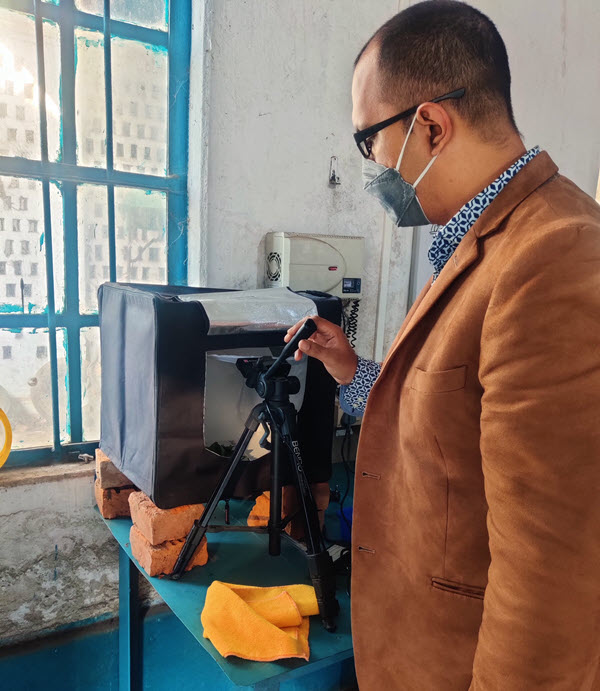There are few entry barriers to tea. It does not demand heavy infrastructure. But the complaint from smallholders selling raw leaf to large-scale tea producers operating multiple factories is that for the past decade, farmgate prices are not commensurate with costs. Now the economics of the tea trade is gradually shifting from oversupply to scarcity. At the same time, some quiet work underway in India is yielding encouraging results that lower the cost of tea production, improve quality, and ease a shortage of labor. The most powerful driver for change is revenue. Prices globally, on average, increased by $0.21 cents per kilo during 2021, according to Trading Economics. Abhijeet Hazarika, IT analyst @TeaSigma and former head of process innovation at Tata Global Beverages, observed that “Tea is not a very high profit yielding commodity and will not be so in the foreseeable future until some tech breakthrough happens.” The frugal innovations described in this series, combined with higher prices may herald that breakthrough.
- Caption: A quality assessment station. Improving quality is critical to the success of growers.
Hear the interview (part 1)

order to identify threats from disease and pests at an early stage enables a more targeted and effective use of pesticides lifting productivity and profits Photo courtesy of Shekib Ahmed
Bringing Technology into the Tea Value Chain
By Aravinda Anantharaman
Abhijeet Hazarika talks about technology in terms of “frugal innovation”.
What is frugal innovation? His checklist includes:
- 1. Low capital expenditure because the industry cannot bear additional high expense
- 2. Low complexity, taking into the view that skill levels on the tea estate, with people who are not very conversant with technology
- 3. Low upkeep cost, because tea estates have limited infrastructure. Innovations that required high maintenance have a short shelf life and soon land in the junk pile
- 4. Clean and safe because this is non-negotiable, and buyers ask for it, especially export buyers
- 5. Highly reliable, because the whole idea of innovation is to improve efficiencies
- 6. Impact, because the scale of impact must justify adoption of innovation
The ideas he shares are not limited to large estates but have taken cognizance of the small growers. Frugal innovation also correlates with low risk which makes it an attractive proposition. And yet, there have been few takers for it.
In Part 1, we look at how implementing frugal innovations can impact the purchase of leaf and the sale of tea.
Innovation in the procurement of leaf
Saurav Berlia is the third generation in his family’s tea business. The LR Group (Berlia Foods) has been involved in all aspects of tea, from gardens and factories to broking, packing and exports. His company produces more than 20 million kilos annually, supplying to buyers including the top three in India. Berlia decided to pilot some of Hazarika’s projects in frugal innovation.
The group procures about 500 kilos of tea every day from small growers. This process involves calling every small grower each morning for an estimate of the tea they expect to pluck. The small growers sell their leaves, but they won’t know the price they will be paid for it until the next day. They will also not receive feedback on the quality of their leaves.
Berlia is piloting an app that his growers could connect to. With this, the call every morning is made redundant. The grower’s login to the app to understand the market requirements in the morning and offer the estimated quantity of leaves right there. What’s more, because they have an insight into the market requirements, they can set their own prices. Berlia’s staff can accept the price or negotiate before they buy the leaf. Once the transaction is confirmed, the grower gets a message with the weight of the green leaf to be supplied and the price they will be paid for it.
A three-month pilot has shown a positive response and a few of the growers are very happy. However, Berlia admits that he met with resistance at both ends — growers were resistant to the new-fangled app that demanded their inputs and attention. At his factory, Berlia’s staff were convinced it wouldn’t work. They preferred the status quo. He says patience accompanied by training addressed some of this resistance. With each unit having about 50-100 growers as partners, the app can potentially transform how transactions are conducted, to everyone’s benefit.
“Technology has become much more affordable today than what it was 5-10 years ago because processing power has made it affordable. Devices are more affordable. Technology has become simpler.”
– Shekib Ahmed
Using data effectively
Another early adopter of tech is Shekib Ahmed who runs the Koliabur Tea Estate near Silghat in Assam. The 1,600-acre estate next to the Kaziranga National Park with 900 acres under tea. Low hill ranges form part of the terrain here. The garden produces exceptional single-origin CTC tea.
Ahmed chose to partner with Hazarika because of a shared desire to integrate technology in tea farming. Listen to as Ahmed talks about the two key points that attracted him to this.
“Technology has become much more affordable today than what it was 5-10 years ago because processing power has made it affordable,” says Ahmed. “Devices are more affordable. Technology has become simpler. He (Abhijeet) was reminiscing how, when he was working with data, the cost of data analytics was astronomical. But now with cloud computing and everything, it’s become a lot more affordable for companies of our size to give it a shot. That was the first part.”
“The second part was how he focused so much on frugal innovation, things that are affordable for companies of our size to try to tweak and to learn. And one of the biggest benefits of working with Abhijeet is that when we’re doing three to four projects, two or three may not give the results that we want today. They may give it later or they may not work out. However, the side benefits of all the ideas and discussions, just the access to these bright minds like Abhijeet, like the scientists really opens up a lot of little innovations, which are very groundbreaking in the sense that it’s really helped me improve quality in the last one and a half years,” said Ahmed.
He adopted a simple system of data analytics for tea from the tea auction system. There’s a lot of data that comes from the tea board of India, but this is raw data. Ahmed talks about the resistance to change even here when he says the Indian tea industry is where the steel industry was 30-40 years ago. Innovation was very, very slow and the industry was loathed to move past its way of working.
Ahmed’s tea is sent to the auction every week. Data analytics helped him understand how his tea was performing but also what quality the market was seeking. Just to jump the gun a bit, in using data analytics to offer tea that the market wants, Koliabur and Dubba, both of Ahmed’s estates saw a jump of 15-25% in auction prices this year. From being in the Top 20 in the ranks, they are now in the Top 10, which, given that there are 800 gardens in Assam, is no small feat. But he is quick to add that it’s not data alone that has contributed to this.
For innovation to fully work, it must be leveraged across the value chain.
Listen next week to Part 2 when we take a look at frugal innovation in the fields and in the factory.




- Related
- The Cost of Producing Specialty Tea
- Mechanical Tea Harvesting
- Reviving Darjeeling
- India’s Earth-Friendly Tea Factory
Link to share this post with your colleagues
Signup and receive Tea Biz weekly in your inbox.

Never miss an episode
Subscribe wherever you enjoy podcasts:


